What a fascinating place Jerusalem is! Religion is so visible (and audible) on the street – from the clothing to the sacred places, to the Muslim calls to prayer ringing out over the loud speakers and the carrying or reading of holy books on the move, it’s quite unlike anywhere else I’ve been.
It is not uncommon to see in the space of a few minutes Orthodox Jewish men striding past wearing large fur hats (shtreimel) and long black robes, Eastern Orthodox Christian priests or nuns meandering in long flowing garments, taking snapshots of the holy places on their smart phones and Muslim women well covered with hijab and long loose clothing, going about their shopping with a couple of children in tow.
There’s so much going on in Jerusalem, so many special places, so much history, so many interesting people that it’s hard to know where to begin.. I’ve decided to start with what was most striking and different to me – Jewish Jerusalem.
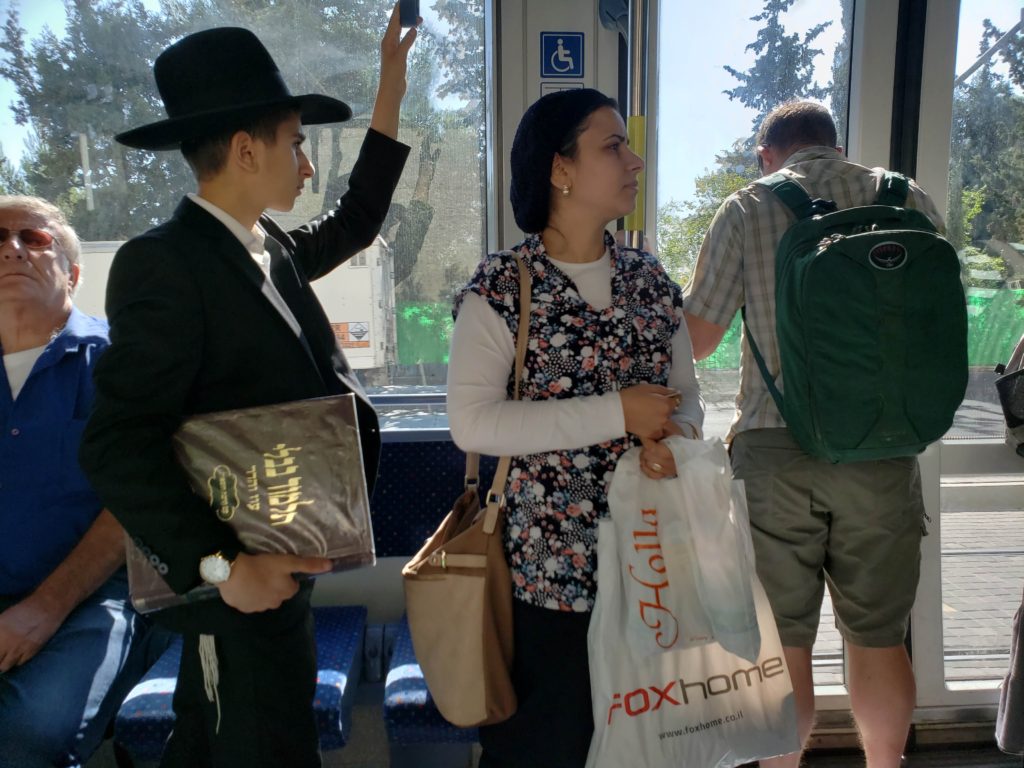
On our first day wandering around Jerusalem I couldn’t help being fascinated by the clothing people were wearing, the hats and the hair styles. I’ve lived and traveled in Islamic countries and have Muslim friends so their clothing feels quite normal to me, but I was not at all familiar with the many ways Orthodox Jews dress. I knew of the little skull cap (kippah) Jewish men wear but there’s so much more!
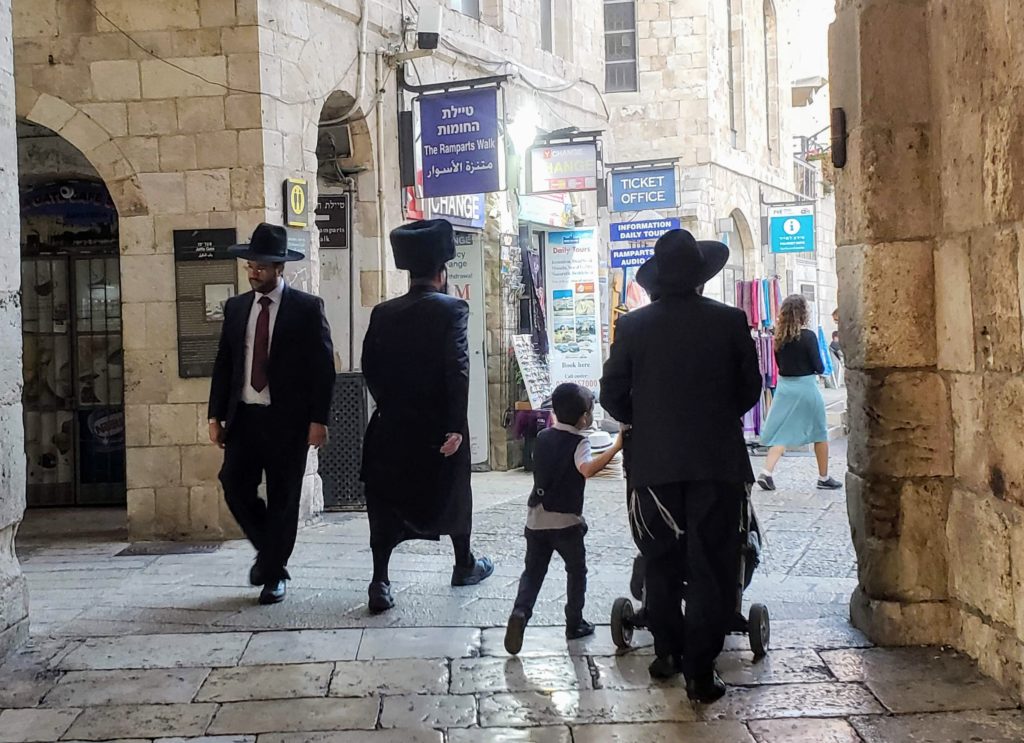
The most common dress for religious guys seems to be white shirts and black pants with either a long black robe or a regular suit jacket. Ties are optional. Black hats are common. The large fur hats are worn especially on Shabbat or the religious holidays. Young boys, skater types, business men – all kinds of people have specially knotted tassles (tzitzit) hanging down from the four cornered cloth they wear under their shirts. I have only seen a few people wearing the prayer shawl (on Shabbat) – mostly people put that on in the synagogue or perhaps at the Western Wall when praying. The young boys in vests (see child in above photo and second man in graphic below) look great and the long hair wringlets around the ears on young and old is rather interesting. Here is an image off the net that shows some of the men’s attire we are seeing lots of:

Considering it is hittting 30 degrees or almost most days, it is astounding fur hats and long coats and suits are so popular! I’m sweating it out in my single layer, loose, light, fit for travel wear!
The orthodox women dress differently too. Elbows and collar bones need to be covered, trousers are not worn and skirts or dresses need to go over the knees. Despite the heat stockings are generally worn with closed toe shoes. Married orthodox Jewish women cover their hair- some with hats or berets, others using scarves in a really trendy looking turban style or the more old school handkerchief style – not always covering all the hair.
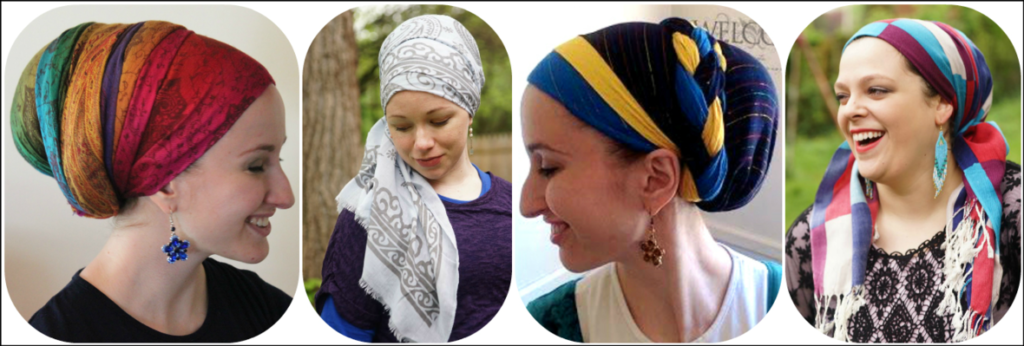
Other married women I saw who didn’t wear scarves but otherwise fitted the orthdox way of dressing usually had their hair out. It was often parted dead straight down the middle and their long thick brown hair seemed to me to look perfect, no straggly bits, no hairs out of place, everything a perfect even length. At first I wondered whether because of the holidays these women had gone to the salon to get their hair done (and I’d seen them a very short time after while the hair still looked perfect) but now I’ve twigged… to cover their hair (as their beliefs require) some orthodox women wear wigs! The wigs are known as sheitel, more about it in this video if you’re interested.
In order to avoid getting sunburnt and to avoid wearing sunscreen I am wearing skirts to the ankles and loose, long-sleeve shirts… just need a head covering or a wig and I could almost fit in!
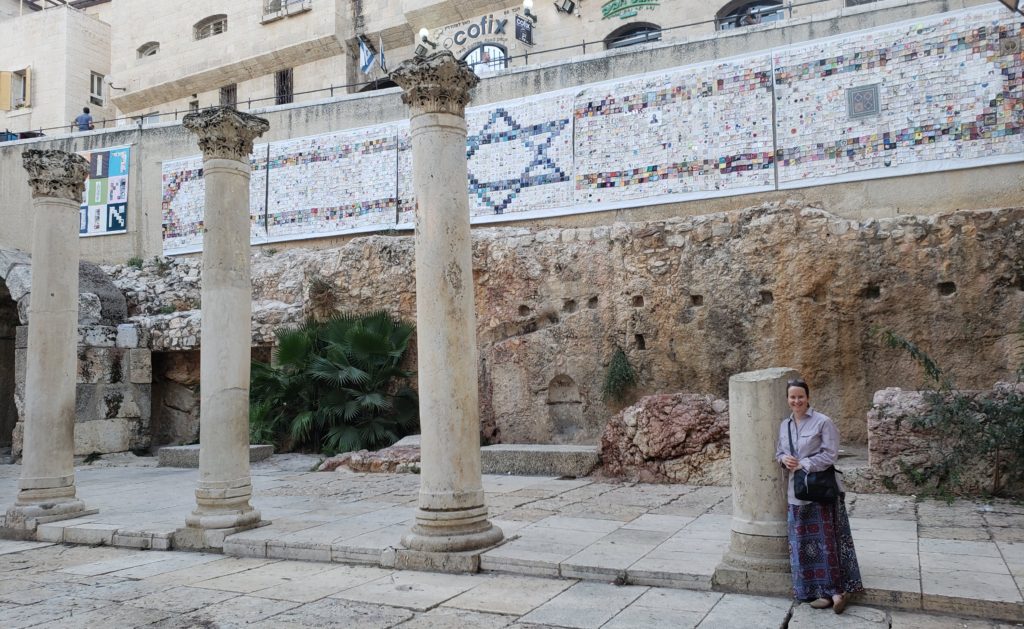
In general the women maintain their modesty yet look very feminine and often quite trendy (ok maybe I’d never fit in!). Interestingly, there are about 100 women in Jerusalem who take modesty to another level… covering themselves completely, including their faces. I haven’t seen any of them but heard about this in the Israel museum.
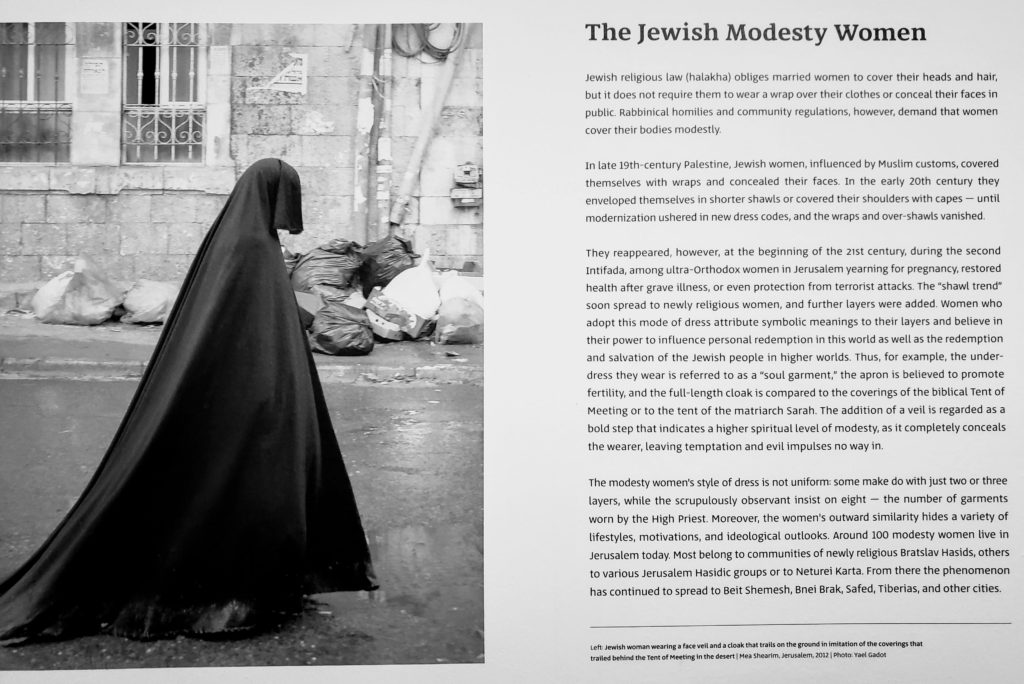
While Orthodox Jews dress so distinctly there is little in the Jewish law/ the Torah about clothing (except for clothing for priests). The book of Numbers chapter 15 requires Jews to put fringes on a four pointed garment as a way of identifying them as Jews and also as a reminder to observe all the commandments. So that’s where the tzitzit comes from… but the other things that these days identify orthodox Jews have their origins in 19th century Eastern Europe, not Jewish Law. The long black robes and the fur hats were what the Polish nobility wore and Jews in Eastern Europe adopted that trend – suitable no doubt at the time and for the cool climate, but highly impractical in Israel’s hot weather, yet here this trend continues.
The skull cap’s origins are unclear – but by the 16th century it had somehow become normal for the more observant to wear most of the time, for others just during prayer and study. Not until the 19th century did it became a binding custom for men to cover their heads. Jewish women had adopted the practice of hair covering around the 1st to 3rd centuries CE as a way of practicing modesty.
Note: The styles of clothing I’ve described are worn by orthodox Jews, non-orthodox Jews dress like you or I. Orthodox Jews make up about 34% of Jerusalem’s Jewish population compared to 20% secular, 19% traditional, 16% reform and 11% conservative Jews (2013 stats). With an average of over 6 children per orthodox family (!!) the percentage of Orthodox Jews is expected to rise.
One thing I’ve noticed here is the large number of children and pregnant women. Not uncommon to see orthodox parents out and about with 5 or 6 children in tow and often Mum pregnant! I’ve seen as many if not more men than women with strollers, older siblings carrying young ones like their parents would and in general lots of families everywhere. It’s not just my observation – looking into it, the overall fertility rate in Israel is the highest in the OECD at 3 children per woman – much higher than the OECD average of 1.7!
Right, that’s enough about the people… now onto signifcant Jewish places. The main Jewish holy site is the Western Wall (known by many Christians as the wailing wall although this is not a term used by Jews).
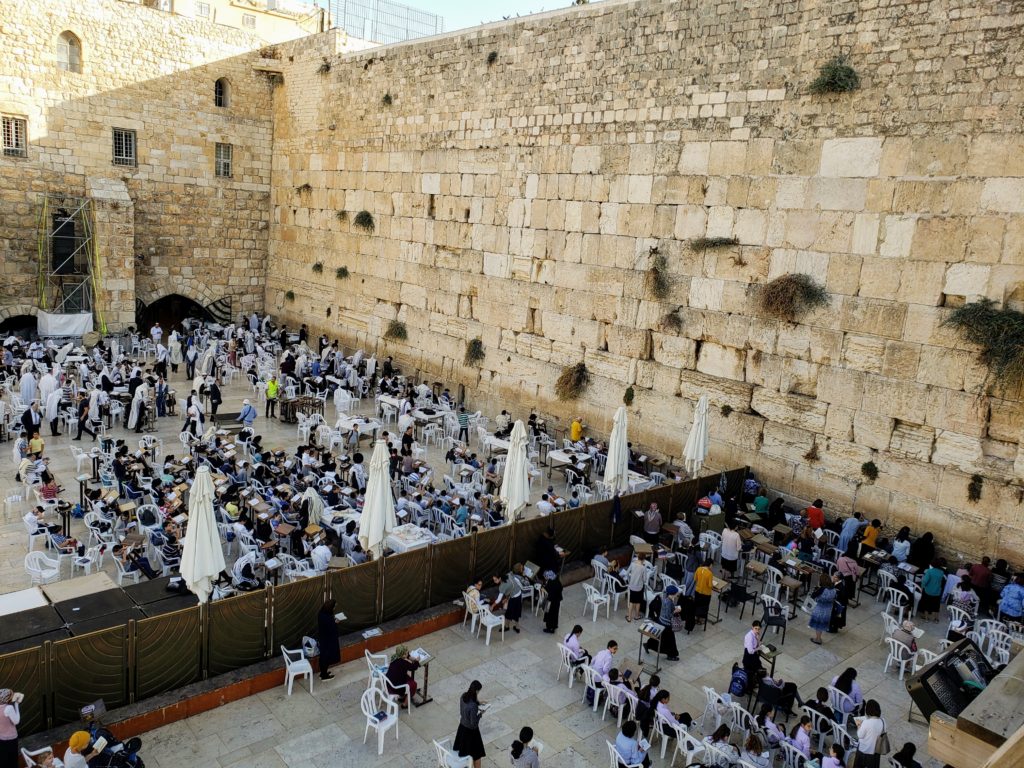
To understand the Western Wall’s significance here’s a history lesson. The holiest site for Jews was the Temple – built in Jerusalem by King Solomon, it stood from about 1000 BCE until it was destroyed in 586 BCE after the seige of Jerusalem. The second temple was then built on the same site in 516 BCE, originally a simple structure built by Jews returning from exile in Babylon but then under King Herod in the 1st Century BCE it had a complete overhaul becoming much larger and more elaborate. It was a seriously huge complex as this model of Jerusalem in the year 66 CE shows.

The Western Wall we speak of today was part of a much longer retaining wall (488m long!) built in Herod’s time to encase the natural steep hill, creating a large rectangular base on which a huge flat platform could be created. This renovated and expanded Temple Mount area allowed for more room for the temple and all its additional buildings.
In 66 CE the first Jewish revolt against Roman rule began and in the year 70CE the Romans besieged Jerusalem, destroying the city and the Temple. Jews were then banned from the city for most of the next few hundred years, however when the empire became Christian they allowed Jews back in to pray once a year at the still standing Western Wall – where they lamented the loss of the Temple and their people’s fate (hence origin of the now unpopular term ‘wailing wall’).
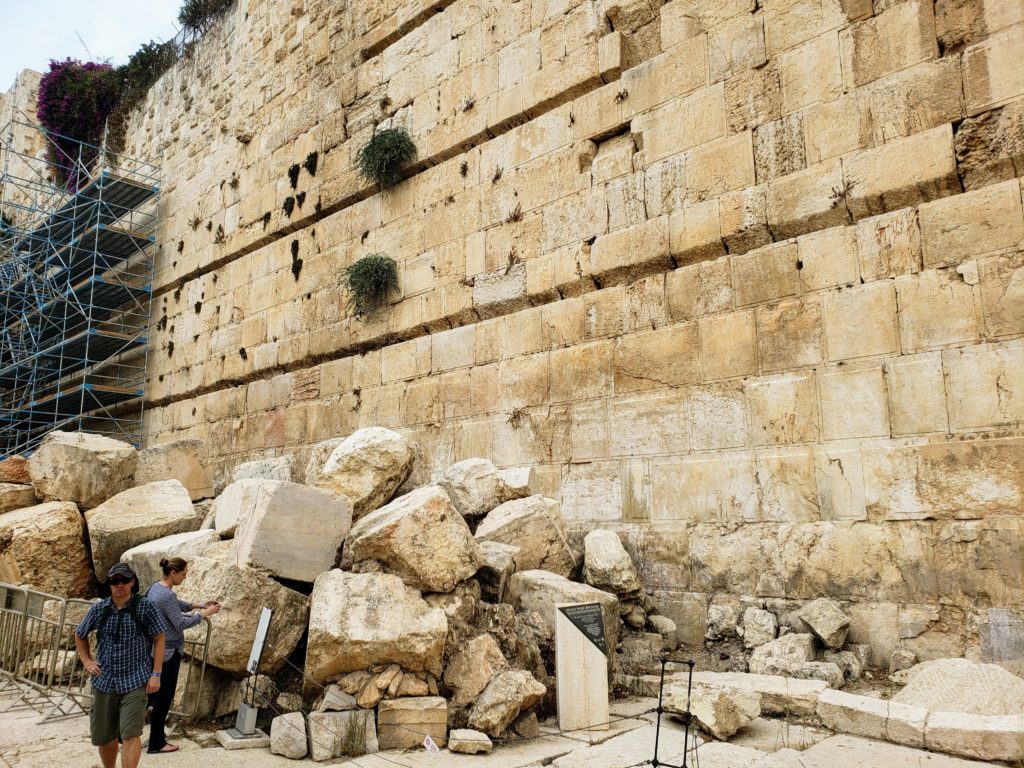
Muslims conquered Jerusalem in the year 638 and cleaned up the temple mount area, giving access to the Jews and building the Al Aqsa mosque and Dome of the Rock on the site. Muhammad established Jerusalem as the direction one should face in prayer (later changed to face Mecca where the Kaaba was) and tradition has it that Al Aqsa mosque is the second Islamic place of worship to be built. The Temple Mount is considered the third most holiest site in Islam and one of the earliest and most noteworthy places to worship God. It is also the location of Muhammad’s Night Journey to heaven, as described in the Quran. More in the ‘Muslim Jerusalem’ blog post to come.
So getting back to Judaism, the Temple is the holiest of places – where God’s presence is manifested more than anywhere else. Because the exact placement of the temple on the site is unknown, Jews don’t walk on the Temple Mount in case they accidentally walk in the area where the Holy of Holies once stood- where divine presence is believed to still be present. The Western Wall which remains from the second temple period is the closest they have to the original temple so this has become the holiest place for Jews to pray.
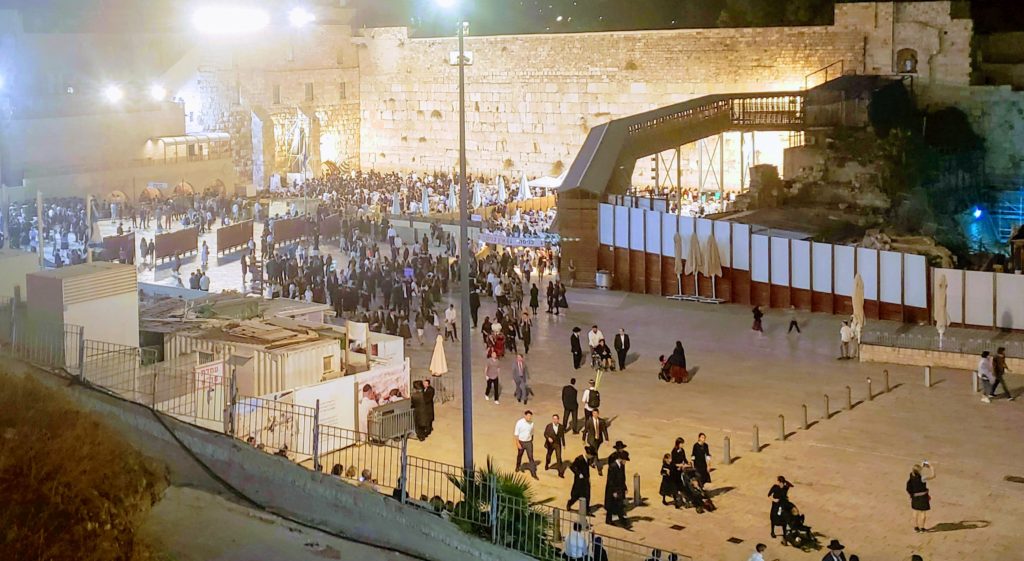
We first visited the Western Wall on a holiday, where like on the Sabbath you can’t take photos. Even writing is forbidden – and we saw someone get told off for this. We visited again on non-Sabbath/ holy days and captured a couple of photos. The wall is huge – made up of 45 levels – 28 you can see and 17 underground, a total height from its foundation to the top of 32 metres. The first seven visible layers of enormous limestone slabs are from Herod’s time. Other layers added on top at different times over history. How they placed these enormous heavy stones in place so carefully is beyond me.
The Western Wall is open 24 hours a day and we have seen lots of people whenever we’ve been (8am, 9pm and middle of the day). You go through security checks to enter the plaza area and there are separate mens and womens areas by the wall where you can pray. We saw quite a bit of swaying forward and back during prayer (surprisingly rapid swaying!) and also people reading from their prayer books/ scriptures.
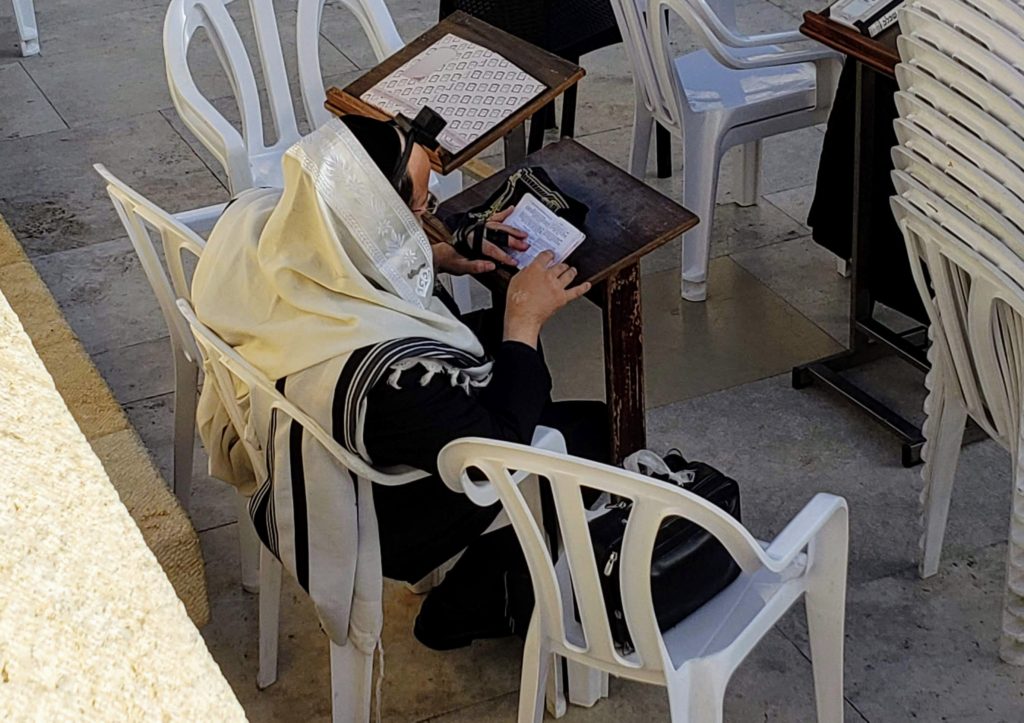
The Old City of Jerusalem is divided into four quarters (Armenian, Christian, Muslim and Jewish). The Jewish quarter includes the Western Wall and was mostly destroyed during Jordanian rule between 1948-1967. Much of it is therefore newly built with quaint narrow streets where its approximately 2000 residents live. You can tell Jewish homes by the mezuzah beside the door. Because the buildings were built recently all the wiring is on the inside as you’d expect – this is in contrast to the much older buildings in the other quarters which have so many cords and wires running along the outside of the buildings. It looks quite chaotic and messy compared with the tidy Jewish quarter.
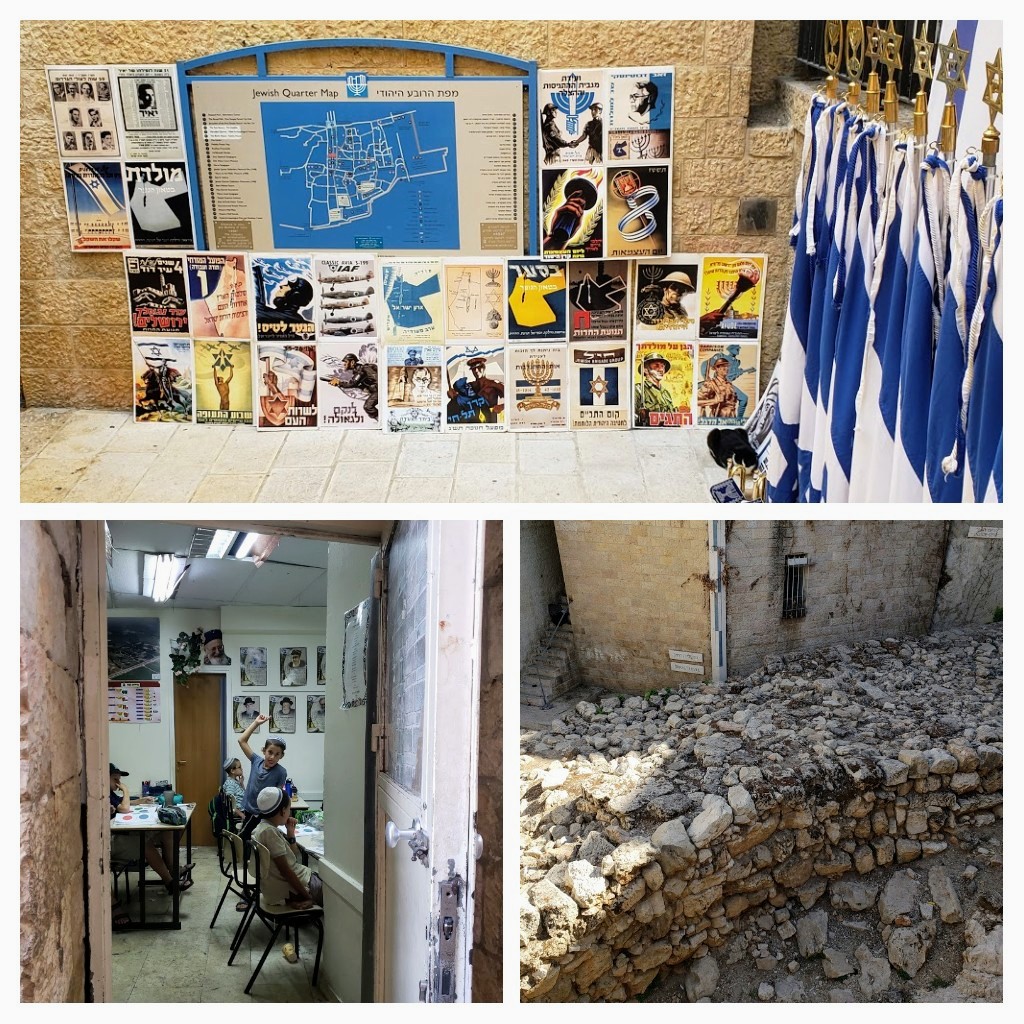
In the Jewish quarter there are synagogues (we only saw the main one, Hurva Synagogue which was built in 2010) and Jewish schools. Because this part of Jerusalem was destroyed and had to be rebuilt, in that process archaeological digs could take place so there are a number of interesting sites. Pictured in the collage above is an ancient wall (really wide!) from the first temple period of the city (almost 3000 years old) and a sign indicating the street level of Jerusalem at that time was much, much lower than current streel level.
They have also uncovered the Cardo and removed later buildings to reveal what would have been the main street of Jerusalem in the 6th century. The Cardo (‘heart’) in Roman cities ran from north to south and was lined with columns on each side. There was a road in the middle open to the sky with colonnaded covered walkways on the sides and some workshops and covered stalls have also been revealed.
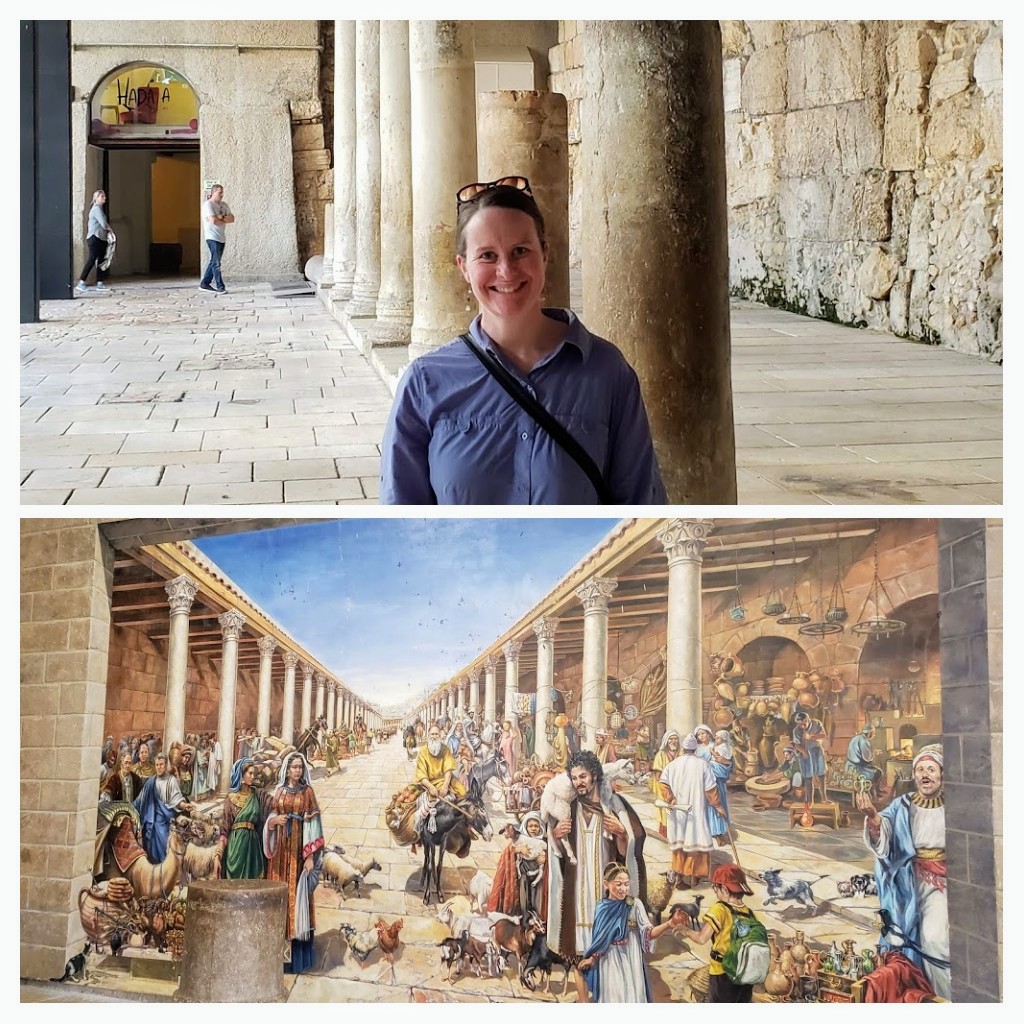
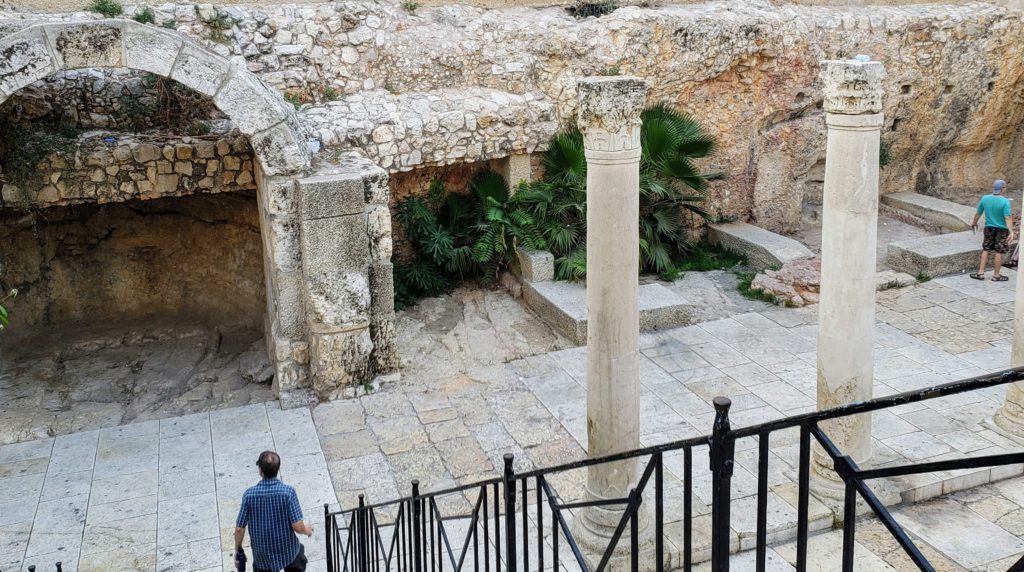
Outside the Old City there are some Ultra Orthodox Jewish neighbourhoods which we found ourselves in by accident a couple of times. Here if people use a mobile phone it’s a ‘kosher phone’ – only for calling, no internet access, camera or even texting capability. Men and women don’t touch in public and on Shabbat everything comes to a standstill. No cooking, no driving, no public transport, no technology is used at all.
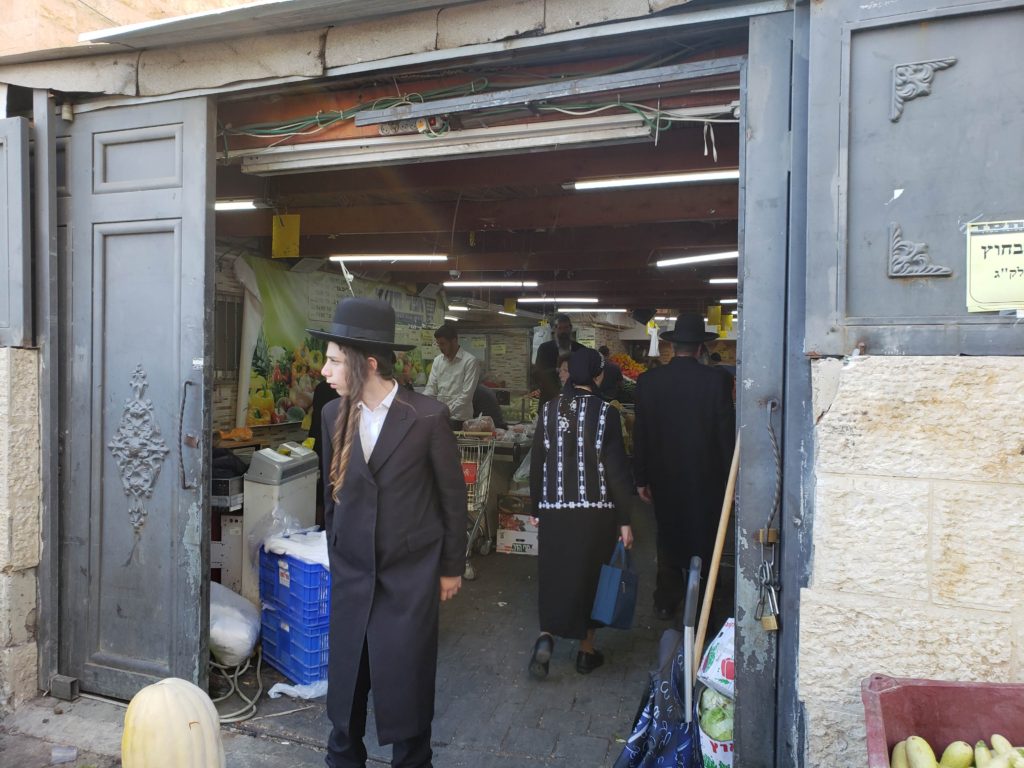
This post is pretty long – well done if you are still with me! I guess it was a bit optimistic to cover everything Jewish-related in one post so I’ll create separate posts about the Jewish holidays we’ve experienced here and about the ancient city of Jerusalem (City of David). Some sites I’ll write about in my Christian Jerusalem post also have significance for Jews too so more to come in future posts. I will finish here by mentioning the other main site in regards to Jewish Jerusalem and the second most visited site after the Western Wall – the Holocaust History Museum.
Yad Vashem means ‘a monument and a name’ and is the name given to the World Holocaust Remembrance Centre. Yad Vashem is home to a holocaust educational centre, research institute, memorials, monuments, a synagogue, gardens, a museum and more.

We found the museum sobering and well done – there was an enormous amount of information and many videos, images, graphics and personal items that made real the experience of the Jews during the Holocaust. I found learning of the antisemitism and hostility toward the Jews by the Christian Church pretty much since its inception rather sad. ;-( Well let’s be fair the whole museum covered very depressing and distressing stuff. We’d been to similar places in Poland (including Auschwitz) but that focused largely on the situation in one country, this museum covered everything, everywhere. It was huge and if you wanted to read everything, see all the videos etc it would take a few full days. The scale and impact of the Holocaust is just mind boggling but you start to get a feel for it as room after room detail how things played out in all the many different countries.
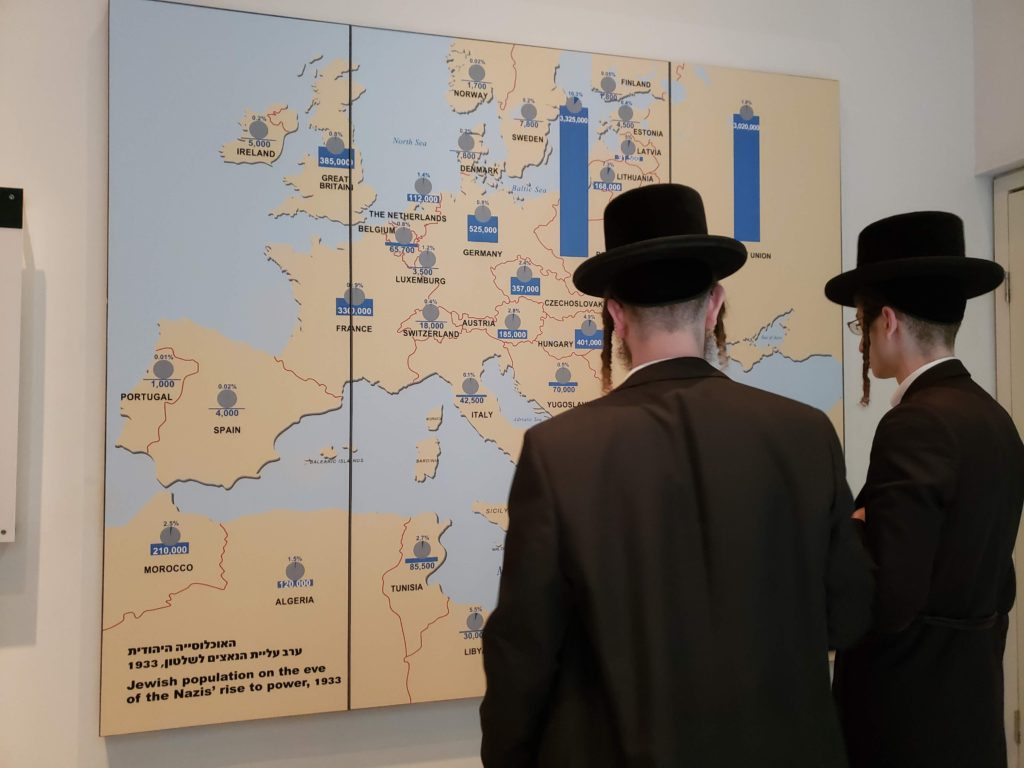
Amongst all the depressing information it was great to read about the Danish Resistance rescuing almost all of Denmark’s Jews (99% of them survived the Holocaust!) and also see the acknowledgement given to the role of Gentiles (non Jews) who helped save or protect Jews. We missed the ‘Garden of the Righteous among the Nations’ which is dedicated to these gentiles and located at Yad Veshem. We read about Oskar Schindler and saw his famous list. But the museum also covered many other ordinary people who did what they could to save Jews in all manner of ways – that was a little bit encouraging to see. We saw Oskar Schindler’s grave on a different outing, in a cemetery in Mt Zion. He requested to be buried in Jerusalem – I’m sure the only member of the Nazi party who has been allowed that honour!
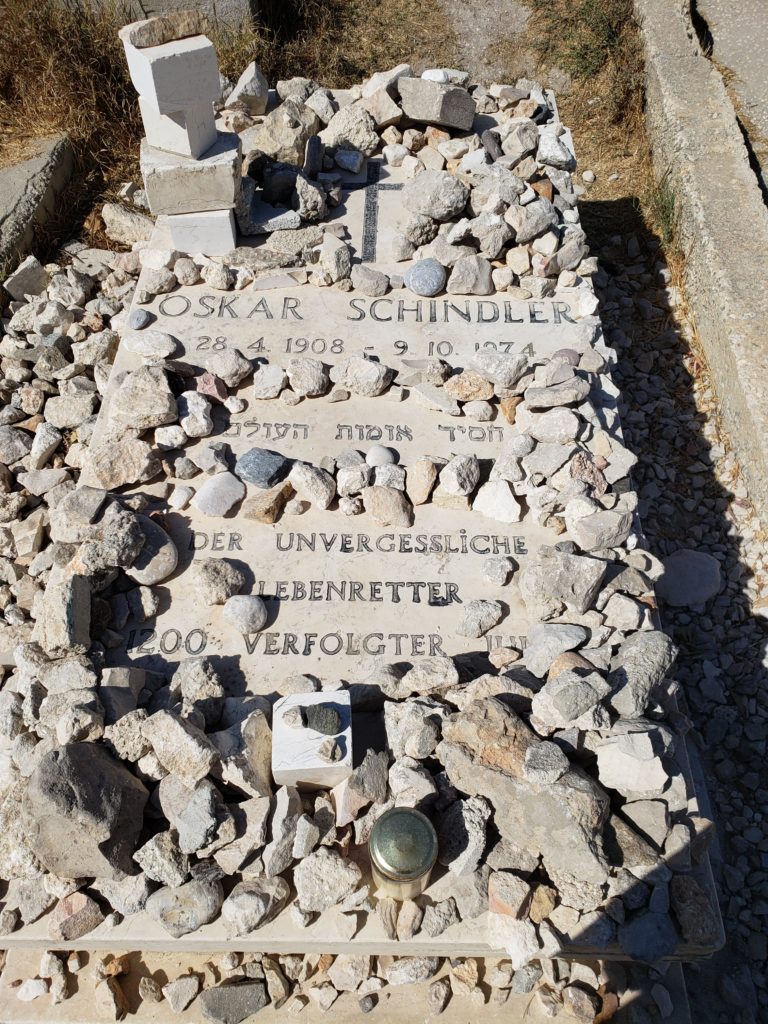
Toward the end of the Holocaust History Museum was the ‘Hall of Names’ which houses about 2.7 million original pages of testimony concerning those who died in the Holocaust. There were of course no cemeteries or headstones to mark the six million people who died in the Holocaust. So here in the Hall of Names they have gathered names – over 4.5 million listed so far – and testimonies about those who died. Fragments of these pages and photos of some of the victims are all around the hall.
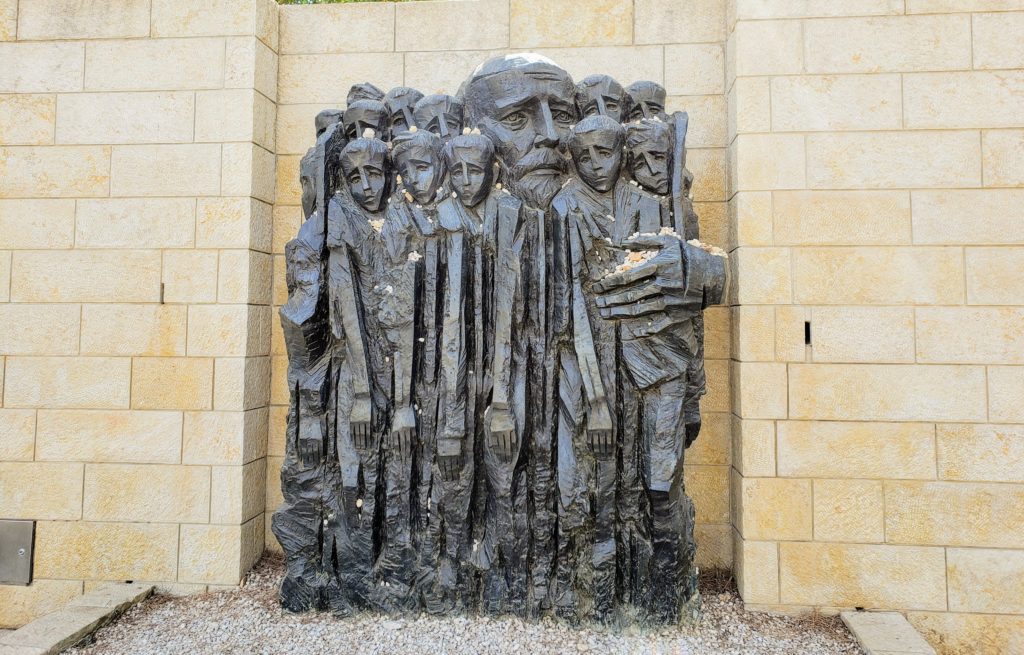
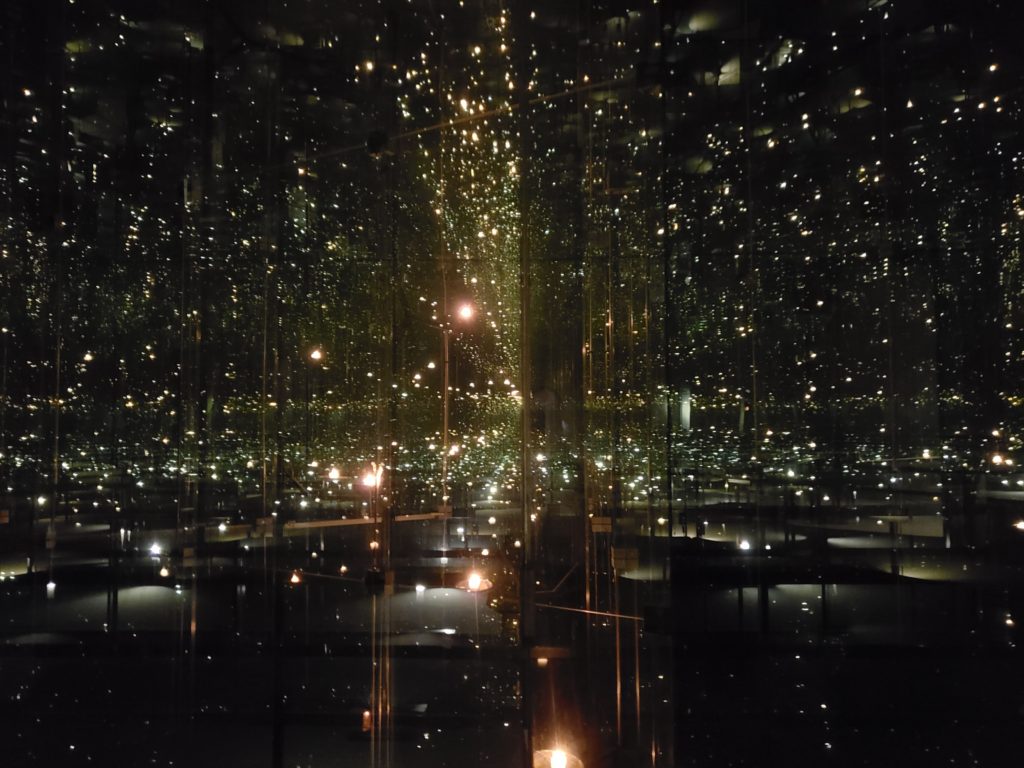
Yad Vashem is not for the fainthearted – but is a must see for visitors to Israel, to get a sense of the scale and impact of the Holocaust.
Thank you Kate
I read and enjoyed every word
Fascinating info
Thanks Mariyln! I may just be the world’s slowest blogger so it’s nice to know that the time and effort/ info is appreciated 🙂